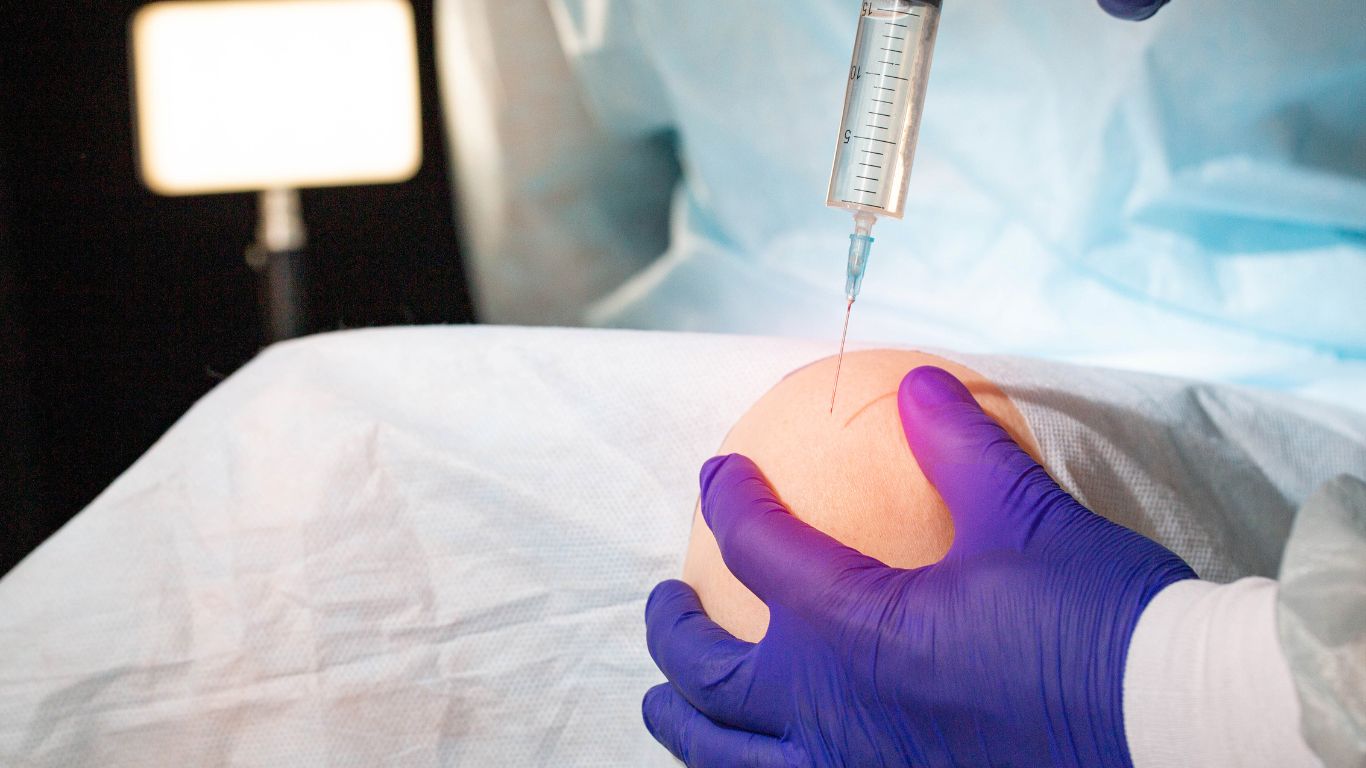
21 أغسطس Medical adhesive injection (VenaSeal) for Treating Varicose Veins
The VenaSeal technique, or medical adhesive injection, is one of the latest advancements in treating varicose veins.
This technique involves closing the dilated veins, helping to eliminate blood pooling and the appearance of varicose veins.
The medical adhesive injection boasts lower risks compared to other varicose vein treatments and has a very high success rate, with more than 98% of cases being successful.
In the following article, Dr. Amir Malkawi, a vascular surgery consultant, will explain the VenaSeal technique, also known as medical adhesive injection, and discuss the advantages and disadvantages of this technique in treating varicose veins.
Mechanism of Action for VenaSeal Medical Adhesive Injections
The treatment of varicose veins using VenaSeal medical adhesive injections is performed in a physician’s office without the need for hospitalization.
The procedure involves the following steps:
- Application of Local Anesthetic: Local anesthesia is applied to the areas where varicose veins have formed in the leg.
- Injection of Medical Adhesive: A long, fine needle is used to deliver the medical adhesive to the base of the affected blood vessel.
- This process is conducted under ultrasound guidance to ensure precise placement.
Read More: Peripheral Vascular Catheterization
The adhesive works by sealing the affected vein, which stops blood flow to it.
Over time, the sealed vein hardens and is absorbed by the body, leading to its disappearance.
Blood is then rerouted through nearby healthy veins in the leg, ensuring that the blood supply to the leg tissues remains unaffected.
Recovery from VenaSeal Medical Adhesive Injection for Varicose Veins
As previously mentioned, the VenaSeal procedure involves injections only and does not require surgical incisions.
Therefore, there is no recovery period after the procedure, and it is generally painless.
Most patients can return to their normal activities immediately after the procedure.
There are some measures recommended after undergoing a VenaSeal injection session, including:
- Elevating the legs as much as possible to reduce swelling.
- Walking for 30 minutes a day.
- Using compression stockings after consulting a doctor to help reduce swelling in the leg for at least 3-7 days post-procedure.
- Avoiding strenuous activities and exercises during the first week after the procedure.
- Using pain relief medications as prescribed by the doctor if experiencing pain after the procedure.
- Avoiding exposure to sunlight during the first week after the procedure.
- Maintaining cleanliness and dryness of the area after the procedure.
Benefits of VenaSeal Medical Adhesive Injection for Varicose Veins
There are numerous advantages of using VenaSeal medical adhesive injection to treat varicose veins compared to other treatment methods, including:
- Only a single injection is required, eliminating the need for multiple injections or other surgical instruments.
- No need for large surgical incisions.
- Very minimal recovery period, allowing the patient to resume normal activities immediately after treatment.
- The procedure is generally comfortable and painless.
- Lower risk of bruising on the leg.
Side Effects of VenaSeal Medical Adhesive Injection for Varicose Veins
Dr. Amir Malkawi highlights that VenaSeal medical adhesive injection for treating varicose veins is generally a safe procedure.
However, it may be accompanied by some rare or temporary side effects, including:
- Swelling of the treated leg.
- Allergic reaction to the medical adhesive.
- Minor bleeding.
- Mild inflammation in the treated area.
- Numbness and tingling in the leg.
- Formation of skin scars.
Frequently Asked Questions
Are the results of VenaSeal medical adhesive injections permanent?
The results of VenaSeal medical adhesive injections are permanent in the treated veins.
However, this procedure does not prevent the formation of new varicose veins in the leg in the future.
Do bruises occur after undergoing VenaSeal medical adhesive injections?
Yes, it is common to see some bruising on the leg after VenaSeal medical adhesive treatment for varicose veins.
However, these bruises typically resolve within a short period following the treatment.
When do varicose veins disappear after VenaSeal medical adhesive treatment?
Varicose veins typically fade gradually over several weeks following the procedure.
However, individuals can resume normal activities immediately after the treatment.
References:
- VenaSeal Vein Glue – Varicose Veins Treatment | Vein Health. (n.d.). Vein Health. https://www.veinhealth.com.au/venaseal/
- David. (2024, July 16). VenaSeal for treating varicose veins | Sunshine Coast Vascular. Sunshine Coast Vascular. https://scvascular.com.au/services/varicose-veins/venaseal-for-treating-varicose-veins/
- Australian Vein Clinic. (2023, January 22). VenaSeal Vein Glue Treatment | Vein Treatments Melbourne | IVH. https://australianveinclinics.com.au/venaseal-vein-glue/
- The Private Clinic of Harley Street Limited. (2023, November 16). VenaSeal varicose vein treatment, Vein superglue for Varicose Veins, venaseal cost uk. The Private Clinic of Harley Street London. https://www.theprivateclinic.co.uk/venaseal-glue-treatment-for-varicose-veins/
- Heart Vein & Vascular. (2018, August 17). Venaseal Closure System | Heart vein & Vascular. Heart Vein & Vascular |. https://heartveinvascular.com/vein-vascular/venaseal-closure-system/
- Medtronic. (n.d.). VenaSeal procedure – Vein disease treatments. Medtronic. https://www.medtronic.com/us-en/patients/treatments-therapies/varicose-vein-treatments/venaseal-procedure.html
